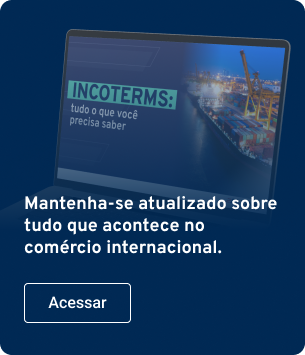Stay up to date with the latest news and articles from the world of logistics
Discover how Allink is transforming the logistics landscape by checking out the knowledge shared by our team of experts below.
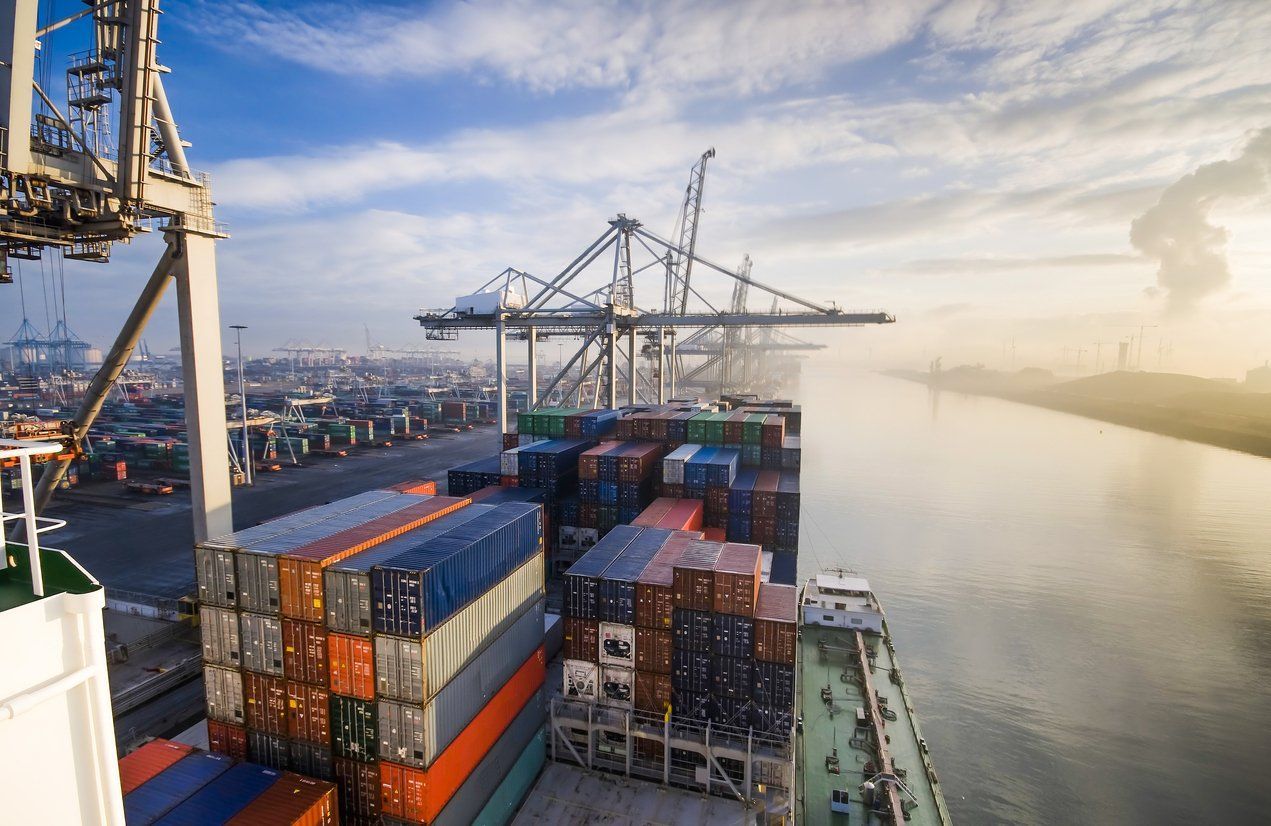
FCL shipping is a popular solution for shipping large quantities of goods, but it involves a series of costs that can significantly impact companies' budgets. Understanding FCL costs is essential for efficient management and to avoid financial surprises during the logistics process. In this article, we will explore the main expenses involved in FCL shipping, such as THC (Terminal Handling Charge), B/L (Bill of Lading), ISPS (International Security Port Surcharge), among others. Learn the specifics of each expense and learn how to plan your transportation in a more effective and economical way. Costs and expenses involved in FCL transportation When opting for FCL (Full Container Load) cargo transportation, it is essential to consider the various expenses and costs involved in this logistics operation. Understanding each of these costs is essential for efficient management and to avoid financial surprises during the process. The main costs include terminal handling fees (THC), Bill of Lading (B/L), port security surcharge (ISPS) and other additional expenses. THC (Terminal Handling Charge) The Terminal Handling Charge (THC) is a fee charged for handling activities carried out at the port terminal. These activities include loading and unloading containers, as well as internal handling within the port. In the case of FCL, the THC value is determined by the shipping company and can vary depending on the type of container used and the location of the port. For example, busier ports or those with more modern infrastructure may have higher rates due to higher operating costs. Understanding this rate is crucial, as it can significantly impact the total cost of transportation. B/L (Bill of Lading) The Bill of Lading (B/L) is an essential document in maritime transport that confirms the receipt of cargo on board the vessel and acts as a contract between the exporter and the shipping company. The fee associated with the B/L covers the administrative costs of issuing this document. The B/L not only facilitates the movement of cargo, but also serves as a title deed of the goods, which is vital for the release of the cargo at the final destination. Therefore, the accuracy and adequacy of this document is essential to avoid delays and legal issues. ISPS (International Security Port Surcharge) The International Security Port Surcharge (ISPS) is a surcharge levied by shipping companies to cover the costs of international security measures implemented at ports. These measures were introduced after the events of September 11, 2001, to increase security against terrorist threats in maritime transport. The ISPS helps to finance the additional security required to protect ports, ships and cargo. This surcharge is generally fixed, but can vary by port and shipping company, reflecting the different security and infrastructure needs of each location. Other possible expenses In addition to the aforementioned fees, there are other expenses that may be incurred during the FCL transportation process. Some of these include: - Customs clearance: This is the process of releasing the cargo through customs, which may involve additional fees and tariffs, depending on the country of import or export. - Storage: If the cargo remains at the terminal for a period longer than expected, storage fees will be applied. These costs can quickly accumulate, making it essential to efficiently manage the time that the cargo remains at the port. - Demurrage: This fee is charged when containers are held beyond the free time agreed in the transportation contract. Demurrage can be quite costly, especially in congested ports, where waiting times can be longer. - Other logistics costs: Depending on the nature of the cargo and the destination, there may be a need for additional services, such as health inspections, specific certifications, insurance, among others. It is also worth noting that road transport costs may be incurred when collecting cargo at the origin or delivering the container to the destination. Understanding all of these costs and expenses involved in FCL transport is vital for efficient management of the logistics chain. Planning and predicting these expenses helps to avoid financial surprises and ensures that the transport process runs smoothly and economically. Tips for hiring FCL transport When searching for FCL transport, it is essential to follow some important tips to ensure an efficient and safe logistics operation. Below, we present valuable guidelines for you to carry out a successful FCL transport. Search for reliable partners Start your search for partners that support FCL transportation services. Finding a reliable company is crucial to the success of your logistics operation. Allink is an example of a reliable partner, specialized in providing efficient solutions for freight forwarders and customs brokers. Prioritize companies with a good reputation and proven experience in the sector. Learn about the history and services offered Before closing any deal, learn about the company's history, its services and commitments regarding cargo care and compliance with deadlines. Allink, for example, offers exclusive service to freight forwarders and customs brokers, ensuring personalized, neutral and quality service. Check reviews, customer testimonials and certifications to ensure that the company you choose is capable of meeting your needs. Don't just prioritize price Avoid the temptation to opt for the cheapest transportation option without considering other important aspects, such as transit time, regularity of service, and possible transfers. Cheap can be expensive when it comes to the safety and integrity of your cargo. Evaluate the cost-benefit, taking into account the reliability and quality of the service offered. Know the dimensions of your cargo and choose the most suitable equipment Understand the internal dimensions of the container to determine whether it offers adequate space for your cargo. Also evaluate how the stuffing will be done. Using the appropriate container prevents damage to the cargo and optimizes the available space, reducing unnecessary costs. Find out the transit time and costs involved Planning is essential to the success of your operation. Consider not only the time on board the ship, but all the steps involved in the process, from customs clearance to final delivery. Make sure all fees are taken into account to avoid cost surprises. Detailed planning helps to avoid delays and unexpected costs. Avoid the dreaded demurrage Demurrage is the fee applied when a container is not returned within the period agreed with the shipping company, starting as soon as the container is unloaded at the port of destination. Avoiding the payment of demurrage requires a well-planned strategy, from the negotiation of international freight to the management of the operation. Maximizing free time and ensuring clarity in the terms of the contract are essential steps to prevent setbacks. The use of technological tools for tracking and monitoring can help maintain precise control of deadlines, minimizing the risk of exceeding the stipulated period and, consequently, avoiding unnecessary charges. Atenção aos incoterms The costs involved in the LCL transport process depend directly on the agreed incoterms. This is because these codes determine the responsibilities of each party (exporter/importer) involved in the process. Therefore, when considering LCL transport, be sure to pay special attention to the agreed incoterm. To be successful in FCL transport, everything starts with the quote. Check out our quote checklist and avoid mistakes at this initial stage.
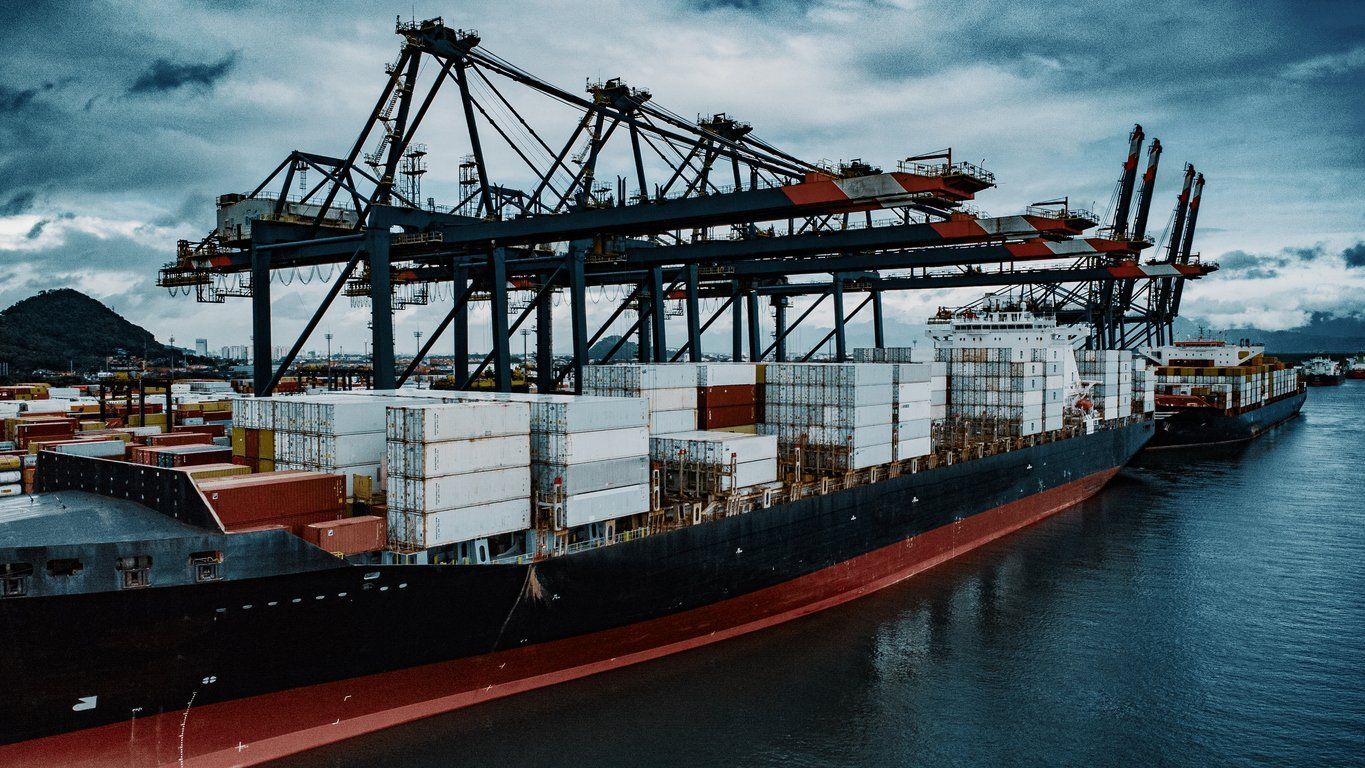
When seeking the best option for transporting your cargo via maritime shipping with efficiency and cost-effectiveness, choosing between LCL and FCL is crucial. This guide comprehensively addresses the FCL modality, providing valuable insights to help you make the best logistical decision for your company. Shall we begin? What Does FCL Mean? FCL, or Full Container Load, is a maritime transportation modality where the importer or exporter fully utilizes the available space within the container. By opting for FCL, the client has exclusive access to the entire container and pays a fixed freight fee, with no other companies sharing the equipment. This choice is ideal when there is enough merchandise to fill the container, or when you prefer or need your cargo not to mix with others, even if the space is not 100% occupied. The Difference Between LCL and FCL The differences between LCL and FCL are quite clear. LCL, or Less Container Load, is the option when the importer or exporter does not have enough cargo to occupy an entire container. In this case, multiple LCL shipments are consolidated into a shared container, allowing access to reduced maritime freight costs even for smaller volumes. On the other hand, FCL, or Full Container Load, is more suitable when the cargo quantity is sufficient to fill and occupy an entire container. This option offers exclusive container space, ideal for companies with significant operational volumes. When deciding between LCL and FCL, it is essential to consider not only the cargo quantity but also its dimensions, operational costs, and delivery times. While LCL is advantageous for smaller volumes, FCL offers additional control and security for shipments that fill an entire container. When to Choose FCL If you're wondering when to choose between LCL and FCL for exporting or importing your merchandise, the initial answer lies in the amount of cargo you have. If your cargo is large enough to fill a container or more, then FCL is the ideal option. However, even if your cargo does not completely fill a container, opting for FCL can be advantageous in terms of deadlines and costs, especially due to economies of scale. This economy occurs when the fixed transportation costs can be spread over a larger cargo. Another important point is when your cargo cannot be mixed with others (either because it will be damaged or it can damage others). Let's suppose your cargo is garlic. It's recommended to choose FCL due to the odor that can damage other products. Now imagine if it were fabric and there was garlic in the same container. Can you imagine how your product would arrive at its final destination? Therefore, when deciding between LCL and FCL, consider not only the volume of merchandise but also the deadlines, costs, and potential issues when mixing with other products. Challenges of FCL Transportation While FCL transportation offers many advantages, such as full control over the container and reduced risk of cargo damage, it also presents significant challenges, primarily in terms of cost. One of the main challenges faced in FCL transportation is directly related to the financial aspect. While in the LCL modality the freight cost is calculated based on the volume or weight of the merchandise, in FCL, the freight price is fixed, paying the full value. This can result in higher costs, especially for importers or exporters with smaller cargoes that do not fully fill the container. Additionally, by opting for FCL transportation, the company bears all container costs, regardless of the volume of cargo transported. This can represent a significant financial challenge, especially for companies with variable or seasonal cargo volumes. Therefore, although FCL transportation offers benefits such as greater security and control, it is important to carefully consider the costs involved and assess whether this modality is the most suitable for the specific needs of each cargo transportation operation. Expenses and Costs Involved in FCL When opting for cargo transportation via the FCL (Full Container Load) modality, it is essential to consider the various expenses and costs involved in this logistical operation. Three important expenses to pay attention to are: THC (Terminal Handling Charge): This fee is charged for handling activities performed at the port terminal. In the case of FCL, the THC value is determined by the maritime company based on the type of container used and the port location. B/L (Bill of Lading): This is a fee related to the issuance of the Bill of Lading (B/L), an essential document in maritime transportation that confirms the receipt of the cargo on board the ship. ISPS (International Security Port Surcharge): This surcharge is applied by maritime companies and is directly linked to international security measures implemented at ports. In addition to these expenses, it is important to be aware that there are other expenses not directly related to transportation that need to be anticipated, such as customs clearance, storage, possible demurrage, etc. Tips for Hiring FCL Transportation When seeking FCL (Full Container Load) transportation, it is essential to follow some important tips to ensure an efficient and safe logistical operation. Research Reliable Partners: Start your search for partners that offer FCL transportation services. Allink is a reliable partner in this regard, specializing in providing efficient solutions for freight forwarders and customs brokers. Know the Company's History and Services Offered: Before finalizing, know the company's history, services, and commitments regarding cargo care and meeting deadlines. Allink, for example, offers exclusive service for freight forwarders and customs brokers, ensuring a personalized, neutral, and quality service. Don't Prioritize Only Price: Avoid the temptation to opt for the cheapest transportation without considering other important aspects, such as transit time, service regularity, transshipments, etc. Cheap can be expensive when it comes to the safety and integrity of your cargo. Know Your Cargo Dimensions and Choose the Most Suitable Equipment: Understand the internal dimensions of the container to determine if it offers adequate space for your cargo. Also, evaluate how the stuffing will be done. If in doubt, consult one of our specialists for guidance. Know the Transit Time and Costs Involved: Planning is crucial for the success of the operation. Consider not only the time on board the ship but all process stakeholders. Don't be surprised by costs! Ensure that all fees have indeed been considered. Avoid the Dreaded Demurrage: Demurrage is the fee applied when a container is not returned within the agreed period with the shipping company, starting to count as soon as the container is unloaded at the destination port. Avoiding demurrage payments requires a well-planned strategy, from negotiating international freight to managing the operation. Maximizing free time and ensuring clarity in contract terms are essential steps to prevent setbacks. Additionally, the use of technological tools for tracking and monitoring can help maintain precise control of deadlines, minimizing the risk of exceeding the stipulated period and, consequently, avoiding unnecessary charges. By following these tips and relying on Allink for your FCL shipments, your company will be prepared to carry out transportation operations efficiently and neutrally, ensuring the success of your imports and exports. Want to know more? Then check out our ultimate guide on LCL as well.
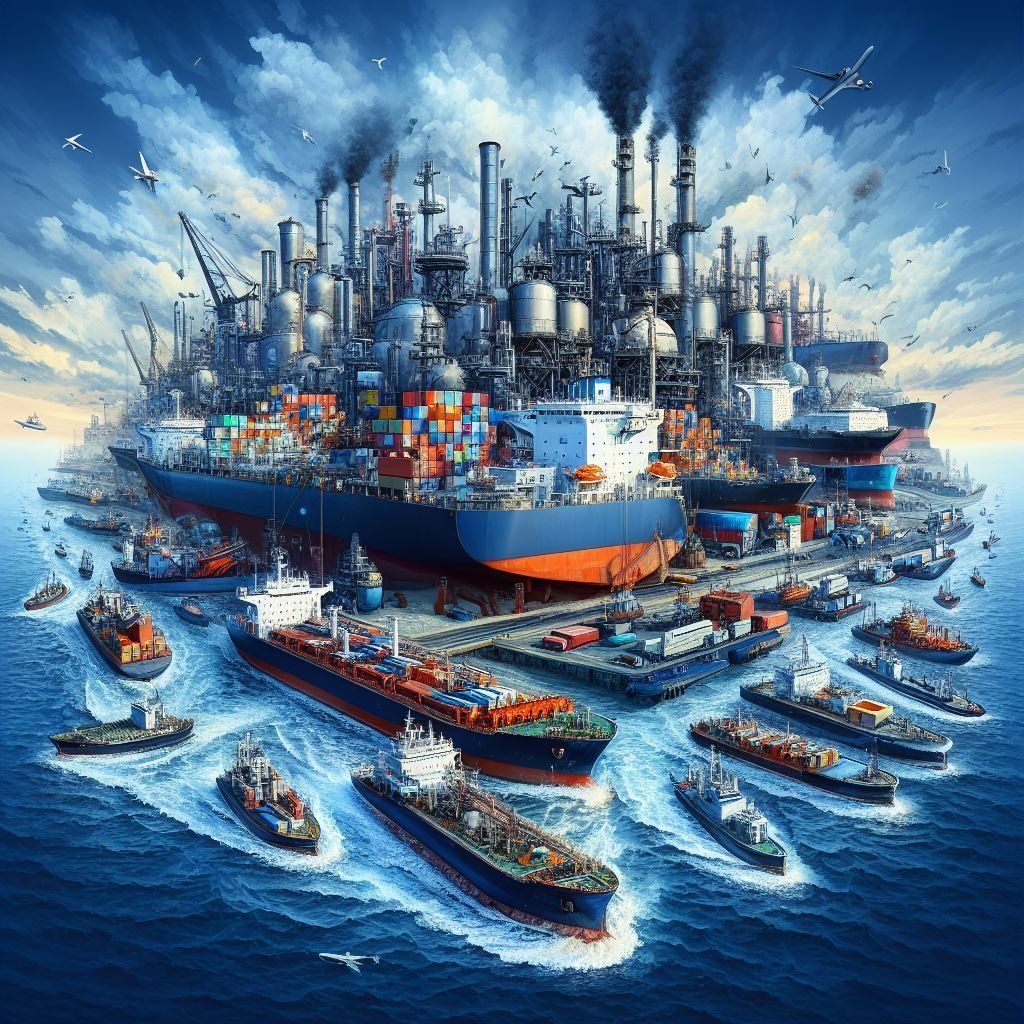
As we venture into the vast ocean of international trade, we face a crucial decision: the types of maritime transport. The complexity of this mode is revealed in different vessels, each designed to meet specific needs. Imagine the diversity of cargo navigating the oceans, reflected in the various types of ships. In this article, we will dive deep into understanding these vessels, exploring their unique characteristics. From the imposing oil tankers to the versatile container ships, each plays an essential role in the global maritime transport landscape. Types of maritime transport: get to know them. Maritime transport is that carried out via the sea. However, when questioning the types of maritime transport, people often confuse it with the types of transport that occur via waterways, namely: maritime, fluvial (by rivers), and lacustrine (by lakes). With regard to maritime transport specifically, we encounter a fundamental dichotomy: passenger maritime transport and cargo maritime transport. This division outlines the distinct purposes and operational nuances that characterize each of these modalities. In the case of passenger transport, the primary focus is on the experience of travelers, through majestic cruises, luxurious trips, exotic destinations, and a wide range of services and entertainment on board. In contrast, cargo transport is the backbone of global trade, moving massive volumes of goods between continents and countries. This modality stands out for its logistical efficiency and its capacity to handle large volumes, significantly contributing to international supply chains. What are the types of ships in maritime transport? To understand the complexity of the maritime modal, it is essential to explore the main types of cargo ships, each catering to specific needs and reflecting the diversity of goods moving across the world's oceans. Below, we highlight some of the main types of cargo ships: 1. Oil tankers Specialized in transporting crude oil and derivatives, these vessels can carry more than 300,000 liters. Internally, they have a complex system of interconnected pipes to balance the distribution of the liquids transported. With an average crew of approximately 25 people, oil tankers have distinctive features such as greater width and shallower draft, making them suitable for navigating in shallower waters. For environmental safety reasons, they are built with a double hull, providing an additional layer of protection against oil spills at sea. 2. Gas carriers Designed for the transportation of liquefied gases such as LNG, LPG, ammonia, ethylene, and propylene, these ships have rounded tanks visible above the main deck. They play a crucial role in the safe movement of volatile substances, ensuring the efficiency and integrity of the transported cargo. 3. Bulk carriers Designed for the transportation of bulk goods, such as grains, minerals, and coal, bulk carriers feature a rectangular deck, facilitating the efficient movement of these materials. They are ideal for products that do not require exact counting, specific packaging, or brand identification. 4. Reefer ships Equipped with refrigeration systems in their holds, reefer ships are essential for transporting perishable cargoes, such as proteins and materials that require precise temperature control, including vaccines. They play a vital role in preserving the quality of products during the maritime journey. 5. Container ships Specialized in the transportation of containerized cargo, container ships are designed in two models: flush deck or cellular. Equipped with cranes or operating with shore-based gantry cranes at port terminals, these vessels are essential for global trade. Modern models include connections for refrigerated containers, allowing for the efficient transport of perishable goods. 6. Live cattle ships Used for transporting live animals, such as cattle, pigs, and horses, these ships are designed with individual cells and compartmentalized like pens. They ensure suitable conditions for the humane transport of animals, adhering to animal welfare standards and international regulations. Main maritime transport ports in Brazil Brazil is home to an extensive list of ports, but we highlight the 10 most relevant ports for import and export, providing a concise overview of their importance in the national maritime landscape: Port of Santos Main center of international maritime trade in Brazil. Handles approximately 4.1 million TEUs annually. Leads in tonnage and volume of containers transported. In 2021, recorded a movement of $62.8 billion in imports and $72 million in exports. Port of Paranaguá: Inaugurated in 1853, it stands out as one of the largest ports in Brazil. The Container Terminal is the largest in South America. In 2021, it handled $16.3 billion in imports and $19.8 billion in exports. Portonave (Port of Navegantes) First private container terminal in Brazil, began operations in 2007. It has a static storage capacity of 30,000 TEUs. In 2021, it was the second largest port in Brazil in terms of transaction values, moving $16.3 billion in imports and $19.8 billion in exports. Port of Rio de Janeiro: Inaugurated in 1910, it stands out for its tradition and modernity. In 2021, it recorded a movement of $10 billion in imports and $6 billion in exports. Port of Manaus The largest river port in the world, focused on electronic products and appliances. In 2021, it moved over $6 billion in imports and $2 billion in exports. Port of Itapoá Inaugurated in 2011, it stands out for its modernization and efficiency. It has the capacity to handle up to 1.2 million TEUs. In 2021, it moved over $10 billion in imports and $7 billion in exports. Port of Vitória Established in the 19th century, it is crucial for the flow of agricultural production. In 2021, it ranked 5th in exports, moving $18.6 billion. Port of Suape It stands out as the main port in the Northeast region. In 2021, it moved $5.7 billion in imports and $1.7 billion in exports. Port of Rio Grande Known as the "Mercosur Port," it is strategic for exports. In 2021, it registered $5.4 billion in imports and $15 billion in exports. Port of Itajaí The second largest in area in Brazil. It integrates the port structure of Santa Catarina. In 2021, it ranked 5th in imports, handling nearly $13 billion, and 7th in exports, with $8.7 billion. These ports play vital roles in Brazilian maritime trade, connecting the country to the global landscape and boosting the national economy. What is the best option for importing or exporting through maritime modal? When choosing maritime transport for import or export, a crucial decision arises: whether to opt for LCL or FCL. Both have their advantages and are suitable for different logistical needs. Let’s explore the characteristics of each option to assist in making the most efficient choice. LCL transport is ideal when the cargo does not occupy the full capacity of a container. Here are some points to consider: > Cost: It is an economical option for smaller shipments, as you only pay for the space used in the shared container. > Flexibility: It allows for sending smaller volumes, providing flexibility for companies with variable demands. > Frequency: It offers frequent departure options, which can be beneficial for small businesses with regular shipping needs. > Increased cargo handling: Sharing the container means greater handling of the cargo, increasing the risk of damage. FCL transport is the right choice when the cargo occupies the full capacity of a container. Here are some points to consider: > Space efficiency: The space is entirely dedicated to your cargo, minimizing the risk of damage and providing greater control. > Transit time: It typically has faster transit times since there are no additional stops for loading and unloading the container. Choose LCL if your cargo is smaller and does not occupy the full capacity of a container. Also, if you seek scheduling flexibility and cost is a decisive factor for your company. On the other hand, opt for FCL if your cargo occupies the full capacity of a container or if minimizing cargo handling is a priority for you. Ultimately, the choice between LCL and FCL depends on the specific characteristics of your cargo, budget, and timeline. Carefully evaluating these factors will allow for an informed decision, optimizing costs and ensuring the efficient delivery of your goods in the international market. Did you like our material? Then continue to understand the topic and explore the work of an NVOCC in LCL shipping.
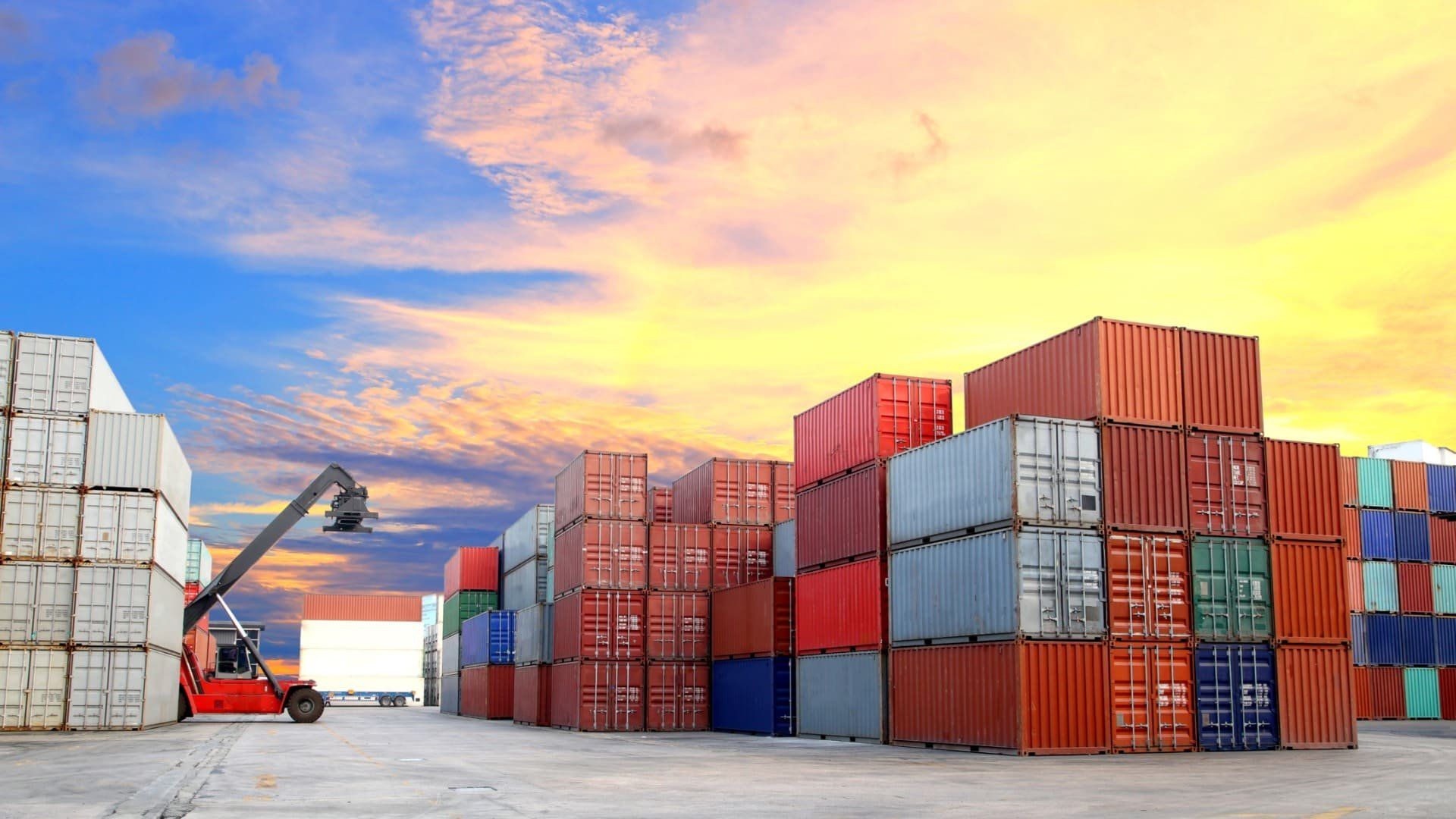
Do you know the different types of containers that greatly facilitate the transportation of goods around the world? These large steel boxes carry, from one side of the world to the other, the food we eat, the clothes we wear, and countless products that are indispensable in our daily lives. Precisely because of this variety of goods, containers also need to be diverse. For those of you working in international trade and needing to export or import goods, it is essential to understand these differences. But this has become easy, as we have created this article specifically to explain to you about the types of containers. Embark on this reading! Why Should You Know How to Choose the Right Types of Containers? You need to know one thing: containers come in different shapes and sizes, adapting to different purposes. Knowing the types of containers gives you an advantage in choosing the best type of shipment for your goods. After all, no matter what goods you are sending, you will always need them to arrive in the same condition they were loaded, right? In this process, the most challenging decision is knowing which equipment to choose among all the different ones available in the market today. This becomes even more important if your products require special attention. Perhaps you have a large machine five meters high, food that needs to remain frozen during transport, or heavy items that must be lifted using a tool. All of this impacts the choice of the best container model for your cargo. In the end, the main reason for considering the types of containers is to ensure that the goods arrive correctly at their final destination. And no, a single traditional container type will not suffice for every item. 5 Types of Containers You Need to Know Now let's get to know the models most used in international trade operations. But first, it's important to highlight that there is a size division among all of them: 20” - Known as TEU (Twenty Foot Equivalent Unit) 40” - Known as FEU (Forty Foot Equivalent Unit) Note that the length, width, and height of each type of container to be considered are the internal measurements, not the external ones. Therefore, you will see variations in dimensions. 1. Dry or Standard For most international trade operations, nothing beats a standard container. This type of shipping container has a door on only one end It is fully enclosed, used to transport general cargo such as furniture, auto parts, clothing, non-perishable foods, among others. For many companies that do international shipping, this type of container is ideal. But, depending on the nature of your cargo, it is important to know the other options available in the market. So, keep reading! 2.High Cube or HC Do your products require extra height? This type of container has the same side dimensions as the Dry model, but its height is higher in comparison. 3.Reefer or RF This is the type of refrigerated container. That is, it is used for goods that need to be transported with strictly controlled temperatures. It is a model widely used by the pharmaceutical and food industries. Its floor has a T-shaped deck that sends cold air throughout the container. This ensures a consistent airflow between the goods. They can maintain any temperature between -30ºC and +30ºC. 4. Open Top As the name suggests, this model has an open top. In terms of dimensions, it uses the same as the Dry model. It has a differential, which is the tarpaulin roof, allowing it to accommodate goods taller than a traditional container. Therefore, it is widely used in the transport of machinery, as it accommodates tall goods, and the container can be stuffed through the top using the hoisting technique. This point is crucial to facilitate the entire logistics operation in some cases. 5. Flat Rack The Flat Rack container type has only fixed or movable end walls. It is generally the model used to transport oversized cargo, both in width and height. Some examples of goods that fit this model are coils, pipes, industrial machinery, among others. They can have vertical ends, while others have collapsible ends to increase their adaptability to different types of cargo. 3 Tips for Choosing the Right Container for Your Operation Here are some factors you should keep in mind when choosing the right type of container for your shipment: 1.Identify What Type of Goods Will Be Transported Know what type of goods will be sent, their weight, and dimensions. Also, understand if they have special requirements such as temperature control, insulation, or ventilation. Each of these items can affect the type chosen. 2.Use Containers with Real-Time Monitoring By placing a smart monitoring device inside the container, you can track a range of important parameters, such as temperature, humidity, and location. In this way, you can also choose to receive real-time notifications—by email or SMS—whenever something happens: temperature and humidity levels are exceeded, or the container is opened outside the expected location, indicating the door has been opened. This way, if the goods are damaged, you will know exactly where, when, and what might have caused it. You can then use the information to improve your future shipments. 3.Understand Whether You Will Need LCL or FCL If you work in foreign trade and international logistics, you have certainly heard of LCL and FCL. Before looking at the types of containers and choosing which one to use, measure the total weight and volume that the goods will occupy to determine which modality you will need to choose. We hope this content has helped clear up your doubts about the different types of containers. Now we have one more important tip: download our LCL Guide and learn everything about this international transport modality.
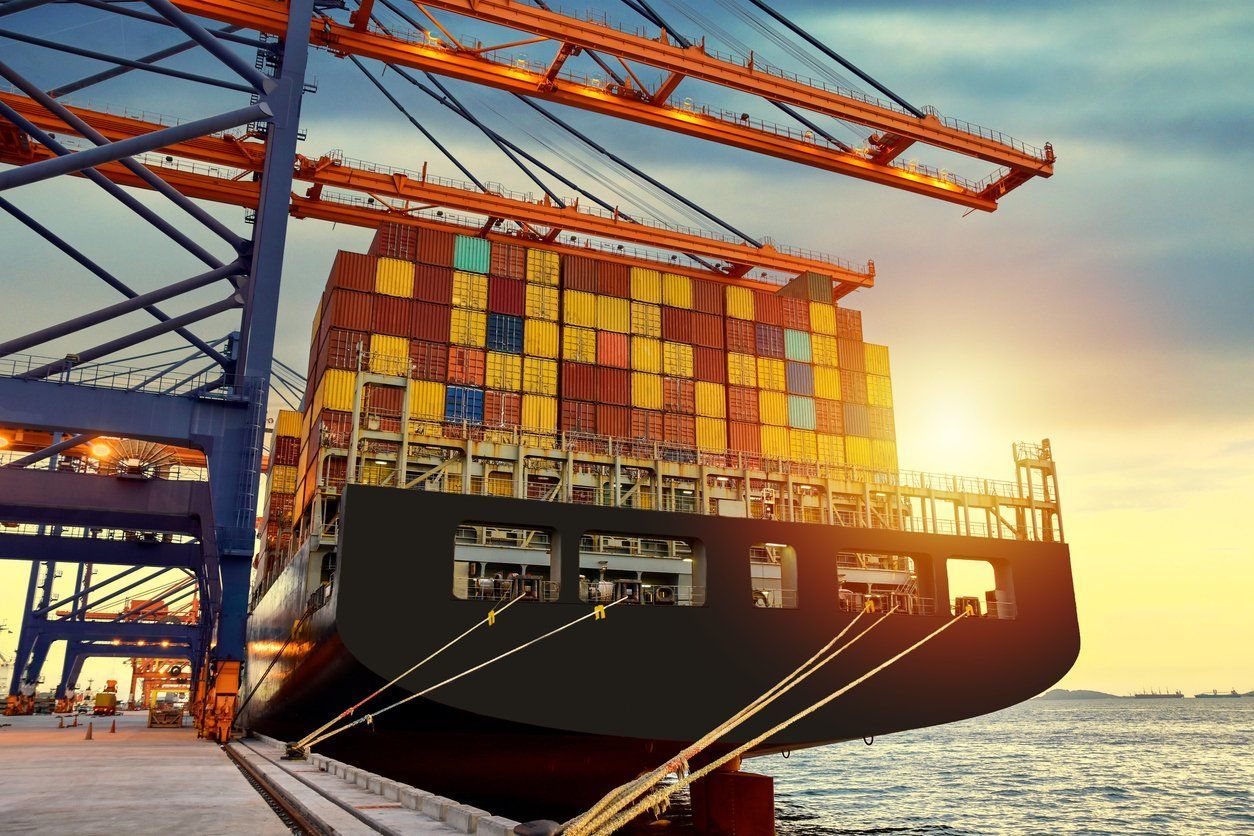
If you work in the field of foreign trade and international logistics, you've probably heard of LCL and FCL. These acronyms refer to two modes of maritime cargo transportation, and that's what we'll discuss in this article. Continue reading to understand how each mode works, making it easier to choose the type of cargo shipment for your company. What is LCL? LCL stands for "Less than a Container Load," meaning the cargo is smaller than a full container. This occurs when a company does not have enough cargo to fill an entire container and consolidates its smaller load with other smaller loads. When a company opts for an LCL shipment, the container carrying its goods will also contain several other shipments. This sharing results in a lower maritime freight cost, as multiple companies share the expense. In this mode, the freight cost is determined by the greater of the two: the weight of the goods (in tons) or the volume (m³). For example, the LCL freight rate might be $50 per ton or per cubic meter. Therefore, a cargo with 1 cubic meter and 2 tons would cost $100. Is this type of shipment safe? Yes, because the goods are divided into lots within the container, ensuring their safety. Once they reach their destination, the lots are carefully separated and delivered to the recipient in an orderly manner. What is the difference between LCL and FCL? Now that you know LCL is a mode of transportation that allows sharing a container with other exporters, it's time to understand how it differs from FCL. FCL, or "Full Container Load," means the exporter has enough cargo to fill a container alone. In this mode, the freight cost is fixed, and the container has only one consignee. LCL and FCL: Which to choose? You know the difference between LCL and FCL, but you're still unsure which to choose for exporting your goods? The simplest starting point for this decision is this question: Is your cargo bulky enough to fill a container? If it's a small load, it can be shipped with several other loads until the container is full. In this case, you can choose LCL transportation. However, if the volume of goods is large enough to fill one or more containers, opt for FCL. Another point to consider when choosing the transportation mode is deadlines and costs. There are cases where, even if the cargo does not fill the entire container, opting for FCL is advantageous due to economies of scale. To illustrate: economies of scale occur when the fixed transportation costs of a load can be spread over a larger load weight. Regardless of the volume of goods, rely on an NVOCC to consolidate your cargo and facilitate your export process. How the LCL Shipping Process Works The first step in LCL service is cargo consolidation. At this stage, the cargo goes to a warehouse and remains there until other loads are ready for consolidation. Once the loads are complete, they proceed to the port for export clearance and loading onto the ship. It may also be necessary to transfer loads between containers during international transportation stages. Upon reaching their destination, the loads undergo deconsolidation, which is the process of separating the goods into shipments. After that, they are loaded onto another vehicle and taken to their destination. Shared Responsibility in LCL Shipping Another important aspect of LCL transportation is the responsibility of shippers (cargo owners) to minimize the chances of delays or other issues. This requires commitment to fulfilling legal obligations, proper document submission, ensuring goods are securely packaged, and purchasing insurance. Problems and delays can increase shipping costs. For peace of mind, all this information can be clarified with the shipping company. Other Interesting Topics Related to LCL Another Denomination LCL is also known as "loose cargo" and FCL as "full container." NVOCC and Others LCL allows freight forwarders, agents, and NVOCCs (Non-Vessel Operating Common Carriers) to contract the service and resell it in smaller lots to exporters or importers. When we talk about NVOCCs, we refer to companies with global structures and expertise to handle cargo logistics. Booking or Space Reservation This is the reservation for transporting goods on a specific date. Unloading or Stripping? "Stripping" is a term commonly used in maritime transport. Thus, stripping a container means unloading it by removing all the cargo inside. Choosing LCL Maritime Transport as a Business Strategy In addition to the benefits already mentioned, choosing LCL can also be a strategic business decision in different ways: Sending small orders to various locations frequently; Lower export costs for small products, as freight varies according to cargo size; Maintaining low inventory levels and working only with smaller inbound and outbound shipments. We hope our content has been useful and informative. How about receiving diverse content firsthand? Just subscribe to our newsletter! Oh, and take the opportunity to download our LCL Guide to delve deeper into the topic!
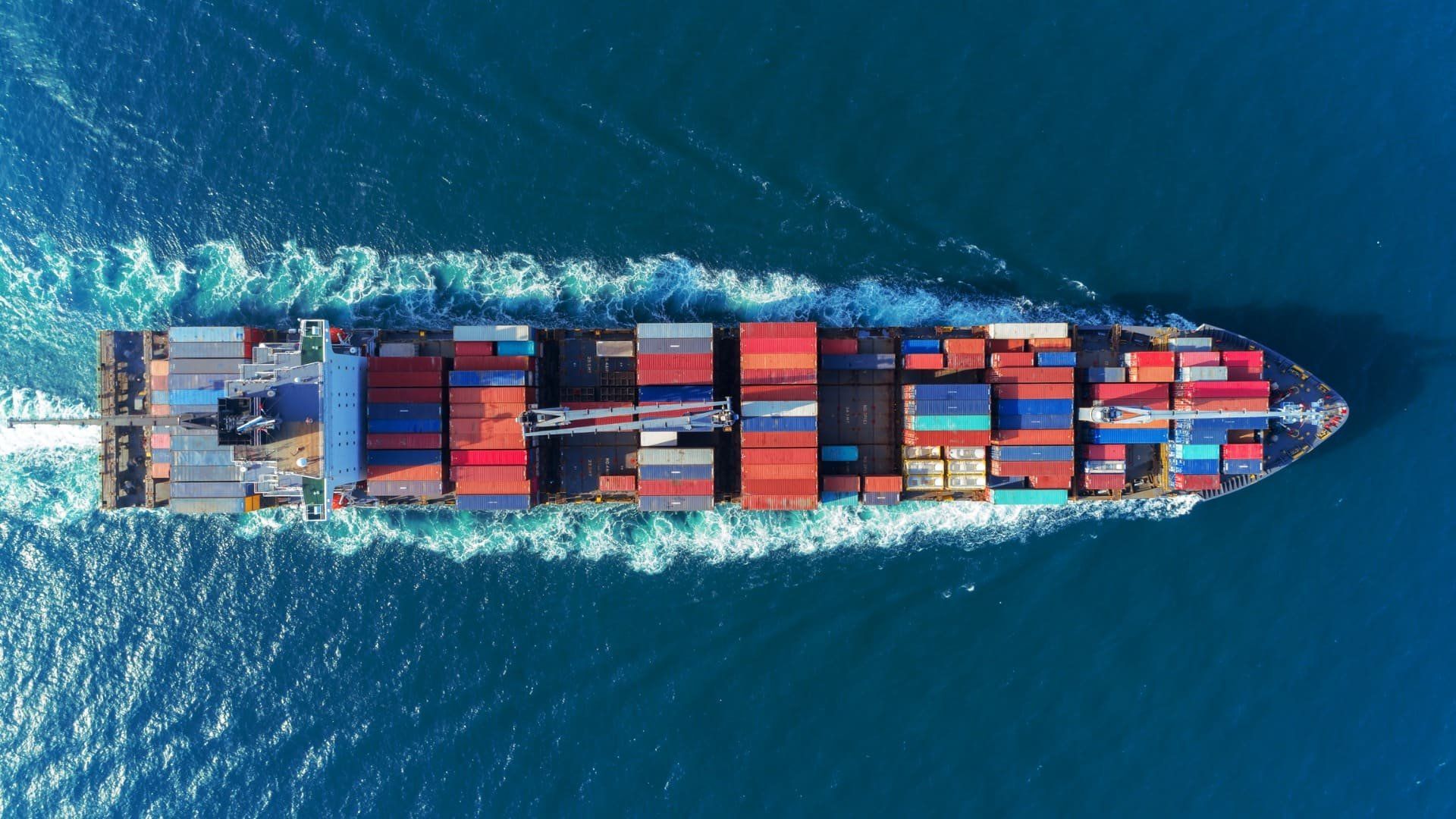
It is estimated that about 90% of Brazilian exports reach their destinations through maritime transport. This highlights the importance of this transportation alternative in the routine of companies. After all, besides allowing the transport of very large cargoes that planes cannot carry, it also tends to offer cheaper freight rates, among other advantages. In this article, learn more about maritime transport for cargo, the main ports, and some curiosities. Who is Maritime Transport Suitable For? Being one of the oldest means of transportation, maritime transport is today one of the main cargo transport methods worldwide. This is because, in addition to offering more economical transportation costs, the variety of cargo types is much broader. This applies both in terms of the types of materials being transported and the weight or size of the cargo, for example. However, although maritime transport is very efficient, it is not always the best option. One of the main points to consider before opting for this mode is the delivery time, which tends to be longer. Compared to air transport, for example, maritime transport has a longer delivery time. Companies must always be aware of urgency. Thus, maritime transport is suitable for: Companies that can plan for a longer time to receive the cargo; Companies looking to save on transportation; Companies needing to transport larger and heavier cargo; Those wishing to reduce transport costs by sharing containers (using the LCL mode), as this makes the entire freight more affordable. Read also: International Logistics: How to Optimize Shipping LCL and FCL: What's the Difference and Which to Choose Advantages of Maritime Transport for Goods To start, it's important to note that the variety of products that can be transported by maritime means is vast and varied. It's possible to ship anything from pipelines to perishable goods. Thus, the advantages of maritime transport for cargo include: Diverse routes: companies can often send cargo via maritime routes that cannot be reached by air due to lack of routes, thus expanding shipping possibilities; Different types of cargo: maritime transport allows for a greater variety of products that are often not accepted by air transport; Project cargo: transportation of heavy and large materials that cannot be transported in conventional containers, such as subway pipes or large machines; Bulk cargo: maritime transport also carries bagged cargo stored in the ship's hold; Refrigerated cargo: it's possible to send perishable goods, such as meat, using reefers in maritime transport; Quantity: the ability to send a larger number of items so they arrive together at their destination; Safe transport of large machinery. Types of Freight in Maritime Transport There are two options: FCL and LCL. FCL (Full Container Load) is when a company sends a fully loaded container. Essentially, the exporter or importer occupies the container entirely and pays a fixed freight rate. Although FCL is widely used, there are times when a company doesn't have enough cargo to fill a container. When this happens, opting for Less Container Load (LCL) is more cost-effective. This type of maritime transport places cargo from various companies in one container. By sharing the container, the company gets a better freight rate and saves money. This is ideal for those needing to transport small volumes. What Composes the Cost of Maritime Freight To calculate the cost of maritime freight, whether FCL or LCL, several factors are considered: Weight and volume; Origin and destination of the cargo; Type of merchandise, as each requires special care. Perishables, for example, need refrigeration, while dangerous goods require special precautions to avoid accidents; Sales condition (incoterms); Direct service or transshipment; IMO for dangerous goods; Costs associated with cargo handling; Stowage factor; Ease of arrangement on board; Need for special protection; Cargo unitization; Dredging fees. Main Types of Cargo Packaging Packaging: The first consideration is the packaging. While it can vary greatly, its function is always the same: to maintain the physical integrity of the product and prevent damage during maritime transport and the loading and unloading process. The exporter must deliver the product properly packaged to avoid issues. Generally, maritime transport requires more robust packaging than other modes, as they are exposed to environmental variations. Unitization: This process groups fractional volumes into a single load, which remains intact throughout the transport. It helps reduce transportation costs and allows uniform volumes to be packed into cargo units, facilitating loading and unloading while providing more security by eliminating direct handling. Container Stuffing: Container stuffing involves fully loading the space with merchandise in an organized and planned manner to maximize space usage, always respecting the load capacity. General Concepts and Types of Unitization Unitization aims to group goods with different weights, shapes, and volumes in a single shipment, simplifying, speeding up, and securing the loading and unloading process while optimizing container space. Common types of unitization for maritime transport include: Palletized cargo; Containers; Pre-slung cargo; Special types of unitization. Curiosities: Types of Ships and Containers Learn about the main types of ships used in cargo transport and the main containers: Bulk Carrier: As the name suggests, this ship is suitable for transporting bulk products. It has large hydraulic hatches covering the holds, and cargo is loaded and unloaded vertically through large hatches. Suitable for transporting: - Sugar - Minerals - Coal, - Grains - Fertilizers, and more. Tanker: Used for liquid cargo, this ship is equipped to transport any liquid product in bulk, from edible oils to industrial chemicals or methanol. Generally, tankers can carry between 5,000 to 40,000 tons and have specific equipment to maintain the appropriate environment for the cargo, including cooling or heating devices. Oil Tanker: A tanker focused solely on transporting oil and its derivatives, capable of carrying 400,000 tons of fuel per voyage. It features interconnected pipes on the deck to evenly distribute the weight and ensure the vessel's balance. These ships are shallower and wider, allowing them to navigate shallower waters, exclusively used for oil and derivatives. Gas Carrier: Specially designed for transporting liquefied gases like ethylene, ammonia, LPG, LNG, propylene, and others. They may have different types of tanks, including independent tanks, membrane tanks, integral tanks, and semi-membrane tanks. Ro-Ro Ship (Roll on-Roll off) A "rolling cargo" ship, fully enclosed like a vertical parking lot with internal ramps, used to transport train or subway wagons, agricultural machinery, buses, tractors, passenger vehicles, trucks, civil engineering machinery, small airplanes, helicopters, and more. General Cargo Ship: Transports various cargoes, project cargo, and containers, including sacks, boxes, paper rolls, and more. It has four or five holds and is versatile. Container Ship: Can accommodate anything, transporting food to machines, including bagged goods, liquids, and more, with multiple holds. National and International Maritime Transport Here are some of the world's major ports: Port of Shanghai, China: Considered the largest port in the world, it moved 43 million TEUs in 2019. Port of Singapore, Singapore: Handled 37 million TEUs in 2019 and is expanding to process 65 million TEUs annually. Port of Ningbo-Zhoushan, China: Located in Zhejiang province, moved 27,530,000 TEUs in 2019, partly due to a new terminal with a 10 million TEU capacity. Port of Shenzhen, China: Moved 25,770,000 TEUs in 2019. Port of Guangzhou, China: Handled 23,236,200 TEUs in 2019, interacting with approximately 300 ports across over 80 countries. Port of Busan, South Korea: Moved 21,992,001 TEUs in 2018. Port of Qingdao, China: Moved 21,010,000 TEUs in 2019, one of the largest in the world. Port of Hong Kong, China: Moved 18,361,000 TEUs in 2019, a 6.3% increase from 2018. Port of Tianjin, China: Moved 17,264,000 TEUs in 2019, an 8.1% increase from the previous year. Port of Rotterdam, Netherlands: Moved 14,810,804 TEUs in 2019. Brazilian Ports Port of Santos: Located in São Paulo, it's Brazil's main port and the 43rd largest in the world, moving over 4.4 million TEUs in 2021. Port of Paranaguá: In Paraná, it handles various products, with significant cargo from the chemical, mechanical, agribusiness, wood, transportation, food, and beverage industries. Port of Itapoá: Located in Santa Catarina, it moves animal protein and derivatives, wood, ceramics, engines and electrical equipment, paper, auto parts, chemicals, automobiles, plastics, and derivatives. Portonave: Located in Navegantes, Santa Catarina, with a total area of 400,000 m². Port of Rio Grande: Transports footwear, wood, agribusiness products, transportation materials, and chemical and mechanical industries, located in Rio Grande do Sul. 7 Types of Containers In addition to various ships, there are several types of containers. Here are some: 20” Dry Container: Used for dry cargo, transporting items like wood, bags, pallets, etc. 40” Dry Container: Also for dry cargo, larger than the previous one, allowing for greater volume transport. 40” High Cube Container: Can be used for dry cargo, with greater height than dry containers, often used for custom projects. 20” Bulk Dry Container: Internally suited for loading various grains, coffee seeds, etc. 20” and 40” Flat Rack Container: Suitable for very large cargo, like heavy machinery and agricultural equipment. Tank Container: Suitable for transporting chemicals, acidic or corrosive cargo. Ventilated Container: Can be used for transporting onions, coffee, cocoa, and more. See how useful and versatile maritime transport is? Interested in shipping cargo? Check out tips to improve your company's cargo transport management.
Stay informed about foreign trade
Subscribe to our newsletter and receive free weekly updates about the world of logistics.


